(A) p-methoxy benzaldehyde is less recative than bensaldehyde towards cyanohydrin formation.
(R) The +R effect methoxy group increases the electron deficiency of the carbonyl carbon.
If both (A) and (R) are correct and (R) is the corect explanation of (A)
If both (A) and (R) are correct but (R) is not correct explanation of (A)
If (A) is correct but (R) is incorrect.
If (A) is incorrect but (R) is correct
The correct Answer is:C
Step by step video, text & image solution for (A) p-methoxy benzaldehyde is less recative than bensaldehyde towards cyanohydrin formation. (R) The +R effect methoxy group increases the electron deficiency of the carbonyl carbon. by Chemistry experts to help you in doubts & scoring excellent marks in Class 12 exams.
Updated on:21/07/2023Topper's Solved these Questions
- ALDEHYDES AND KETONES BOOK - OP TANDONCHAPTER - ALDEHYDES AND KETONES EXERCISE - MATRIX-MATCH TYPE QUESTIONS
8 Videos
- ALDEHYDES AND KETONES BOOK - OP TANDONCHAPTER - ALDEHYDES AND KETONES EXERCISE - PASSAGE 1
5 Videos
- ALDEHYDES AND KETONES BOOK - OP TANDONCHAPTER - ALDEHYDES AND KETONES EXERCISE - OBJECTIVE QUESTIONS (LEVEL -B) SET II
36 Videos
- ALCOHOLS, PHENOLS AND ETHERSBOOK - OP TANDONCHAPTER - ALCOHOLS, PHENOLS AND ETHERSEXERCISE - SINGLE INETER ANSWER TYPE QUESTIONS / ALCOHOLS AND PHENOLS
15 Videos
- BASIC PRINCIPLESBOOK - OP TANDONCHAPTER - BASIC PRINCIPLESEXERCISE - SECTION V INTEGER ANSWER TYPE QUESTION
3 Videos
Similar Questions
Aldehydes and ketones ar specially susecptible to nucleophilic addition because carbonyl group
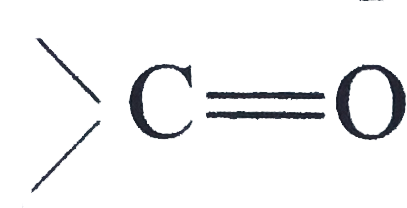 is polar (due to electronegativity difference between carbon and oxygen)
is polar (due to electronegativity difference between carbon and oxygen)
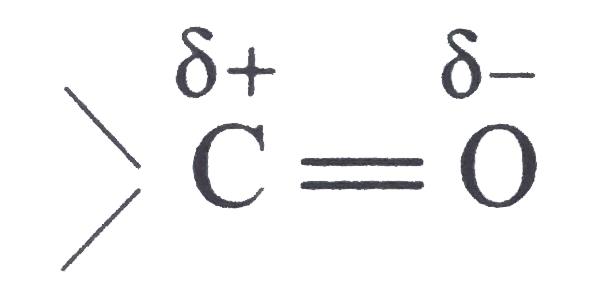
Positive charge on carbon makes it reactive towards the nucleophili. This addition is catalysed by acid.
Reactivity of carbonyl compound towards nucleophilic addition increases with increases in the electron deficiency at carbonyl carbon. Thus, (-I.E.)groups increase while (+I.E.) groups decrease the reactivity of carbonyl compound.
Which among the following isomeric compounds is most reactive?
View Solution(A) Benzaldehyde is less reactive than acetaldehyde towards nucleophiles. ltBRgt (R) Carbonyl carbon in benzaldehyde has less positive charge than that of carbonyl carbon in acetaldehyde due to resonance.
View Solution
Knowledge Check
Assertion: Phenol is more reactive than benzene towards electrophilic reactions.
Reason : The +R effect of OH group increases the electron density on benzene nucleus.ABoth A and R are correct and R is correct explanation of ABBoth A and R are correct but R is not the correct explanation of ACA is correct but R is in correctDA is incorrect but R is correctAssertion: Benzaldehyde is more reactive than ethanal towards nucleophilic attact.
Reason : The overall effect of- l and +R effect of phenyl group decrease the electron density on the carbon atom of >C=O group in benzaldehyde.AIf Both assertion and reason are true reason is the correct explation of the assertion.BIf Both assertion and reason are true but reason is not the correct explation of the assertion.CIf assertion is true but reason is false.DIf assertion is false but reason is true.Assertion. Propene is more reactive than ethene towards electrophilic addition reactions
Reason. Hyperconjugation effect of the CH3 group increases the electron density in the double bondAIf both assertion and reason are true, and reason is the true explanation of the assertion.BIf both assertion and reason are true, but reason is not the true explanation of the assertion.CIf assertion is true, but reason is false.DIf both assertion and reason are false
Assertion : Benzaldehyde is less reactive than propanal towards nucleophilic addition reactions.
Reason : Benzaldehyde is less sterically hindred.
View SolutionAldehydes and ketones ar specially susecptible to nucleophilic addition because carbonyl group
 is polar (due to electronegativity difference between carbon and oxygen)
is polar (due to electronegativity difference between carbon and oxygen)
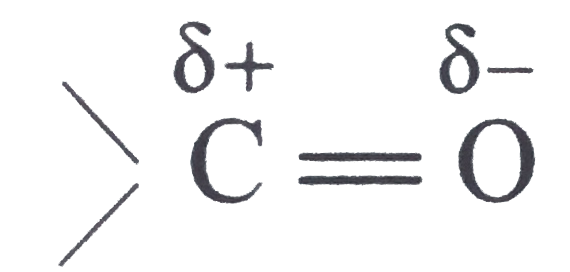
Positive charge on carbon makes it reactive towards the nucleophili. This addition is catalysed by acid.
Reactivity of carbonyl compound towards nucleophilic addition increases with increases in the electron deficiency at carbonyl carbon. Thus, (-I.E.)groups increase while (+I.E.) groups decrease the reactivity of carbonyl compound.
Select the least reactive carbonyl compound for nucleophilic addition :
View SolutionAldehydes and ketones ar specially susecptible to nucleophilic addition because carbonyl group
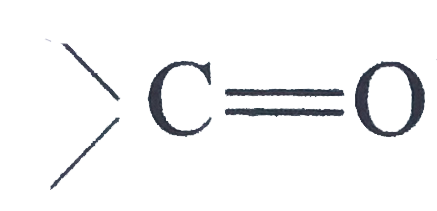 is polar (due to electronegativity difference between carbon and oxygen)
is polar (due to electronegativity difference between carbon and oxygen)
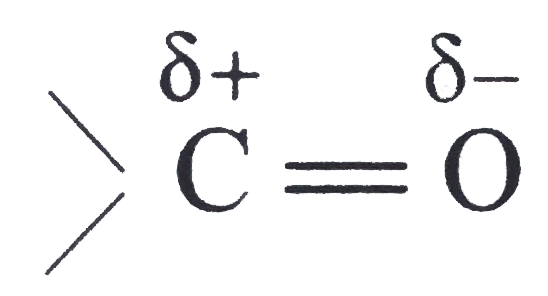
Positive charge on carbon makes it reactive towards the nucleophili. This addition is catalysed by acid.
Reactivity of carbonyl compound towards nucleophilic addition increases with increases in the electron deficiency at carbonyl carbon. Thus, (-I.E.)groups increase while (+I.E.) groups decrease the reactivity of carbonyl compound.
Carbonyl compounds show nucleophilic addition with :
View SolutionAldehydes and ketones ar specially susecptible to nucleophilic addition because carbonyl group
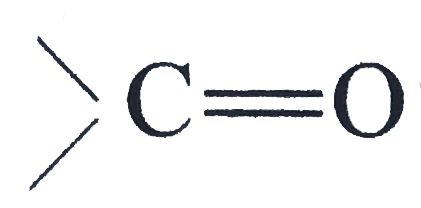 is polar (due to electronegativity difference between carbon and oxygen)
is polar (due to electronegativity difference between carbon and oxygen)

Positive charge on carbon makes it reactive towards the nucleophili. This addition is catalysed by acid.
Reactivity of carbonyl compound towards nucleophilic addition increases with increases in the electron deficiency at carbonyl carbon. Thus, (-I.E.)groups increase while (+I.E.) groups decrease the reactivity of carbonyl compound.
Which among teh following carbonyl compounds is most pola?
View SolutionAldehydes and ketones ar specially susecptible to nucleophilic addition because carbonyl group
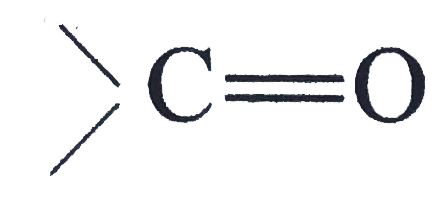 is polar (due to electronegativity difference between carbon and oxygen)
is polar (due to electronegativity difference between carbon and oxygen)
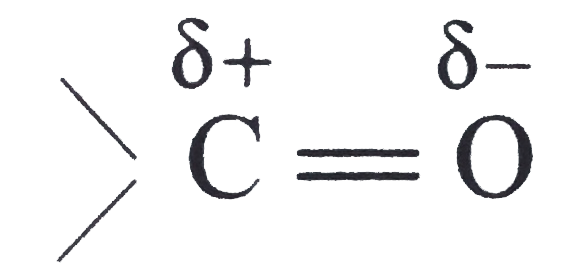
Positive charge on carbon makes it reactive towards the nucleophili. This addition is catalysed by acid.
Reactivity of carbonyl compound towards nucleophilic addition increases with increases in the electron deficiency at carbonyl carbon. Thus, (-I.E.)groups increase while (+I.E.) groups decrease the reactivity of carbonyl compound.
Which among the following is most reactive to give nucleophilic addtion ?
View Solution
